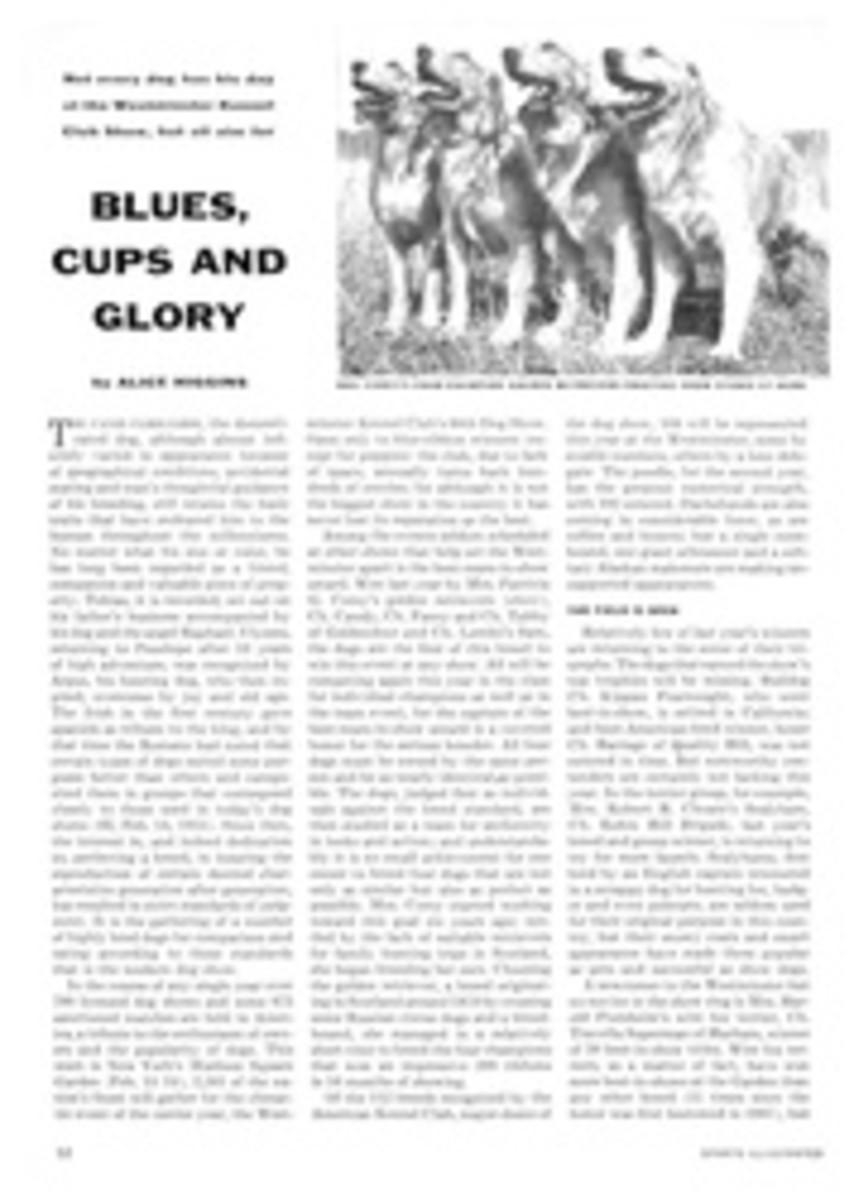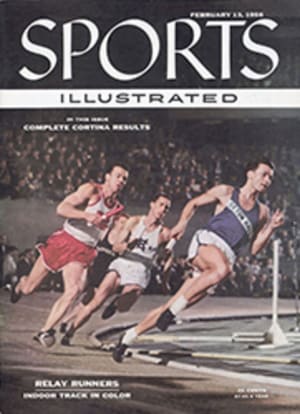
THE BOOMING BUDS
Since small children and kindly ladies of 90 bowl regularly, it may seem ridiculous that five strapping members of the Budweiser team of St. Louis should have been suffering from painful injuries at the time of their momentous match last month with the Strohs of Detroit for the U.S. Match Game Championship. The fact is, however, that professional bowlers often are called upon to roll far above and beyond the call of common sense, with the result that split thumbs are the rule rather than the exception and that assorted ailments like pulled tendons, sore muscles and strained backs are more numerous among bowlers than, say, baseball players, whose season is almost as long.
The professional bowler participates in three to six leagues weekly. This means he must bowl at least nine to 18 games, plus practice and warmup games. Then he rolls in sweepstakes, in special matches for his sponsor, gives lessons during the day and, at least once a week, rolls for charity. During an exhibition the other night for the benefit of the New York Police Athletic League, Graz Castellano acknowledged that he had bowled 14 games that day and 18 the previous day and "maybe a dozen, maybe more" the day before that.
Little wonder, therefore, that when the Budweisers faced the Strohs on the weekend of January 14-15 in St. Louis for the first half of their 24-game, home-and-home match, young Dick Weber had a cracked thumb, former National Champion Don Carter was limping on a painful leg whose knee was swollen to twice its normal size, Claude (Pat) Patterson had been warned not to bowl because of a hernia condition, Billy Welu suffered from a sore arm as well as a bad back (he has been rolling all season against doctor's orders) and Ray Bluth could hardly lift his ball because of a shoulder injury.
The amazing thing was that the Buds not only beat the "invincible" Strohs, champions for three consecutive years and victors nine times since the Bowling Proprietors Association of America inaugurated the event in 1934, but totaled a record-shattering 26,249 pins (1,093 average per game) to win by 747 pins. It was a tremendous triumph for Captain Jerome (Whitey) Harris, a sergeant in the St. Louis Police Dept., and for Manager J. F. McGuire, an executive of a Budweiser subsidiary company, who formed the team only 18 months ago. True, they had the brewery's money behind them—Budweiser is reported to have budgeted more than $50,000 annually for the team—but money is not always enough. A championship team must have spirit, and the Budweisers have it. Throughout the first 12 games they danced, shouted and clapped each other on the back. The Strohs, on the other hand, sat mutely and stared at the alleys. At the conclusion of that Sunday night in St. Louis, the Budweisers had piled up an insurmountable lead of 965 pins.
The Strohs fought back fiercely during the weekend of January 21-22 in Detroit, averaging 1,106 per game, but managed to pick up only 218 pins. Weber averaged 224 for the match, Carter a shade under 224 (he turned in high score of 288 and high series of 746 on the final night), Patterson 220 and Welu and Bluth 212 apiece. Captain Buzz Fazio, who finished with series of 701, 712 and 743, led the losers with an overall average of 219.
One of the unknown heroes of the Budweiser victory, even though he never got to see a game, was Pete Trynasty, a good-natured, happy-go-lucky bowling instructor of Seattle. Trynasty, you may recall, finished last in the All-Star tournament in Chicago in January, 1955, bowling to the end despite a thumb that looked as if it had been through a wringer. When he finished, he remarked: "The most important thing in this game, after you're a 200-average man, is a thumb that won't split. I'm going to spend all year strengthening my thumb for the next All-Star."
THE LEATHER THUMB
This was good for a laugh at the time. Bowlers have been seeking ways to strengthen their thumbs for years. But Trynasty found a way. He returned to the All-Star in December with what he calls a "leather thumb." It is, simply, a leather covering for the thumb which is held in place by a wrist strap. And of all the bowlers Trynasty showed it to, only one—Dick Weber—was desperate enough to try it. And he promptly jumped from the middle of the standings into fourth place.
Weber continued wearing the leather thumb when he returned to St. Louis. He credits to it his excellent showing in the Stroh match. He wore it, too, when the Buds recently rolled a fantastic 3,729 series—fourth highest in American Bowling Congress history. Weber helped that worthy cause with a perfect 300.
ILLUSTRATION

